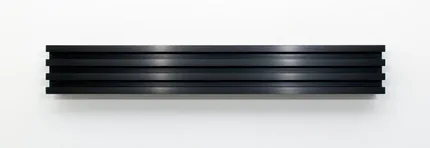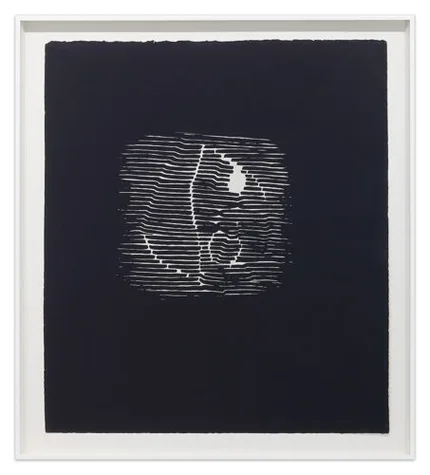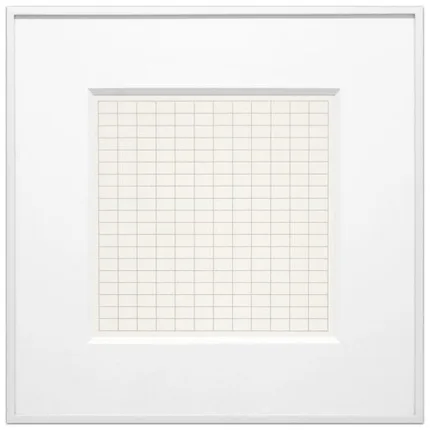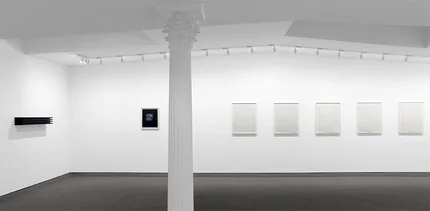By Helen Miller and Michael Strand
What, we are led to marvel, is the challenge of minimalism currently?

The defining attribute of Traces and Planes and Room at Krakow Witkin Gallery (as a result of April 22) is Donald Judd’s Untitled (Black) (1991), but not in the way we in the beginning considered. A person of twelve anodized black aluminum wall items from a collection manufactured in twelve different shades, the function simultaneously absorbs mild like rubber and demonstrates the ceiling-mounted LEDs like moonlight glittering on a lake. Ryan Cross, the gallery’s director, clarifies that this kind of consequences are designed by high-quality strains etched into the impressionable metallic through the extrusion process, which is not to say that they are unintentional. The piece is hung a little below eye amount, pursuing the famously certain artist’s strict guidance. At 1st, it seems to hold dominion above the gallery’s New England-adobe open plan. But is Judd the regulation in this town? The prints in the clearly show, produced in the span of 10 yrs in between 1963 and 1973, are far more elusive. What, we are led to ponder, is the challenge of minimalism now?

Untitled (1963), a lithograph by Gertrud Goldschmidt (Gego), a German-born Venezuelan artist whose retrospective just opened at the Guggenheim last week, hangs on the adjacent wall. This function on paper is equally specific and visionary, but the encompassing use of black in Gego’s print is much more playful, considerably less stern. The place Judd’s traces never depart the xy-axis, Gego’s marker-esque marks hiccup or hit a pace bump just when you think you are onto them. At the heart of the impression, a circle appears to be always about to take care of in white or bent black strains. The highlights, which themselves hover at the edge of recognition, could be leaks of paper untouched by the printer’s ink. This edition of minimalism is much less impenetrable: we can enter amongst the strains, which are for their part free to move around our fascination. The seemingly infinite perform of determine and floor and in unique the conjuring of area out of ink on paper prefigures the artist’s kinetic sculptures — “drawings with out paper” or “drawings in house.”
Ad Reinhardt’s Untitled (1) (1966), Untitled (9) (1966) and Untitled (10) (1966) are some of the New York Faculty painter’s handful of screenprints and aspect the exact same T-condition motif popular in his substantial-scale do the job. Vertically and horizontally prolonged blocks are only somewhat diverse shades of blue or black than the qualifications, and resemble the passages of colour that surface when you close your eyes. Across the home, a in the same way unanticipated depth — a sense of observing into house — takes place in Sol Lewitt’s Straight, Not-Straight and Broken Traces in All Horizontal Mixtures (A few Forms of Traces & All Their Combos) (1973). The impact is of lines managing alongside wavy parallel tracks, which give the illusion of movement and mountainous place. Nonetheless literal, the do the job is also gentle-hearted, expansive, and experiential. The continuum of foreground and background in Lewitt’s seven prints carefully slopes, inviting us to scan upward and throughout the spread.
Segmentation also disrupts the visible discipline. Untitled (1973), Brice Marden’s etching on Rives BFK paper, remembers Rothko, not least mainly because of its area at the considerably close of the tapering most important space of the gallery, which can feel chapel-esque. But Marden, given the stochastic additions of his individual painterly solution to printmaking, emphasizes photograph airplane somewhat than faith or spirituality. The inky borders left by the etching plate sets off three distinct ranges — white, black, and splotchy-ink. The imperfect alignment of the stack — the gaps and overlaps the place the impressions satisfy — emphasize disruption and distinction alternatively than cohesion. The consequent illusion of actual panels is additional reached by way of the degree to which the paper, dampened through the printing approach, now warps. Eventually, the separation is not only product but perceptual the easy black “waist” of the get the job done recedes while the rough white best and base pop.

On a Distinct Day #05 (1973) is a small screenprint from self-proclaimed summary expressionist Agnes Martin’s only foray into the medium, which happened immediately after a sizeable interval of no artmaking at all and lasted nearly two years. On Japanese mulberry paper, a brownish grey grid is softer in look than the black we may well count on of the no-nonsense sort. The designs inside the sq. likewise defy expectation: They are rectangles and not, as we experienced 1st imagined or assumed (on account of their square body), ideal squares. The rectangles are in the kind of a grid as opposed to the staggered, alternating layout of a brick wall in which we are accustomed to viewing rows of rectangles. These differences from what we experienced anticipated go us — not in contrast to the variations in form and colour in the Reinhardt — and separate us from our preliminary impressions. This is a singular however shifty occasion of Martin’s printmaking. An “abstract emotion,” in Martin’s words, like moments of tranquil pleasure or a tranquil calm, might occur in the confront of this kind of apparent-eyed experimentation.
We wonder at the mirage in Gego’s lithograph, the immiscibility of oil and water echoed in the ground’s resistance to the around-flood of black ink, in lighted ripples. Reinhardt’s rectangles also make us issue our senses, and have interaction us conceptually, using what show up to be pure voids and displaying us how they only surface that way simply because of the thrust-pull outcome of their relative shape, and our elision of their colour and depth. In Lines, Lewitt entertains with his personal perceptual engage in, this time in a spectrum of linear possibilities and associations — from straight to wavy to dashed. His variants make us recognize how, even with our everyday immersion in traces, we still do not entirely grasp their impact on our eyesight or on our mood. For Judd, differentials of line and plane and area inject all the worth (fairly virtually a adjust in one particular quantity with regard to a different) that “Specific Objects,” the title of the artist’s most popular essay from 1965, ever have to have.
At the stop of the day, the do the job resists no matter what we might believe it resembles and pushes toward some thing else that is more elemental and chic. Judd’s Untitled (Black) is not a portray, a sculpture, a bench, or Darth Vader transformed into a fragment of the horizon. Gego’s print is not a skeleton or the mirage of a skeleton. Lewitt’s lines are not horizon strains. His policies are not procedures. Martin’s grid is not excellent or rigid. Marden’s etching is not a torso or a column. Reinhardt’s contribution is Art as Art, as the title of his picked writings, published in 1991, places it.
The Apollonian logic on screen might alert us to the absorbing distraction and cacophony of the present. But is this the position? Artwork that would make us additional “attentive”? If so, then this comprehending of the undertaking, ought to we simply call it minimalism or not (Judd persistently balked at the title, which he found inadequate and limiting if not outright improper), remains dreadfully incomplete.
In Lines and Planes and Place, just about every artist may be achieving for a place wherever their operate simply cannot be “deconstructed.” There is no hidden interior that means. For the theorist Jacques Derrida, this is the place artwork and justice overlap, paradoxically, in the extremely refusal to moralize, provide a concept, or guarantee a far better lifestyle. These artists abide by their very own honed set of prompts and instincts by way of certain if irreducible (Martin could refer to our endeavours here as a “bad guess”) actual physical, content, and philosophical constraints, gleaned from living and art. Their operate would seem incapable of staying applied for everything else.
In Bauhaus, Texas (1994), a documentary made around the close of Judd’s lifestyle, the artwork historian and curator Rudi Fuchs recounts Judd 50 %-jokingly referring to himself as “the law” in Marfa — the west Texas town wherever he experienced ordered a few previous plane hangars, previous Army offices and adjacent land, and created a 2nd house for himself, his spouse and children, his close friends, and their artwork. One particular could just take offense, and a lot of have. Even now, Fuchs observed in the candid comment a essential to Judd’s get the job done, “precise… really convinced of itself. Of program, on the other hand, what he tends to make is incredibly fragile.”

Fragile indeed, for these a law as Judd conceives of it is not compatible with the assortment of cute and functional domestic items on sale at IKEA, or the practically infinite tips to “declutter” and “live intentionally” — the primary venues of minimalism nowadays. When minimalism will become constructive, when it abandons art’s destructive capabilities, it preaches self-enhancement. The minimalism we find in these artists’ work is additional like self-evacuation. Gego after claimed: “To visualize a remedy is what matters: to make obvious that which nevertheless does not exist exterior of me.” And Martin normally referred to herself as a mere instrument beckoned by inspiration, with absolutely nothing own (like strategies) cluttering the pursuit.
Stepping out of the elevator and into Lines and Planes and Space, this all feels distant. In the inviting top-flooring serenity of the Krakow Witkin Gallery, we have to glimpse up to see the sky. A shiny blue and crimson copy of Reinhardt’s e-book joins the other artists’ seminal texts, manifestos and attempts to articulate the troubles they established for them selves in the tale of art. We choose a seat at the small, round espresso table, an out-west fashion fireplace, and in the midst of art currently being exhibited, packaged and offered, recognize the rarity of these types of do the job now: art that asks nothing at all far more of us than to be with it.
Helen Miller is an artist. She teaches at the Massachusetts College or university of Art and Design and Harvard Summer season School. Michael Strand is a professor in Sociology at Brandeis University.